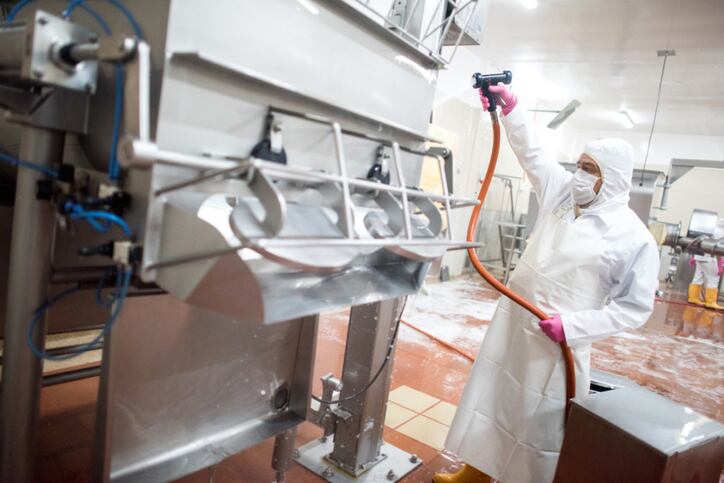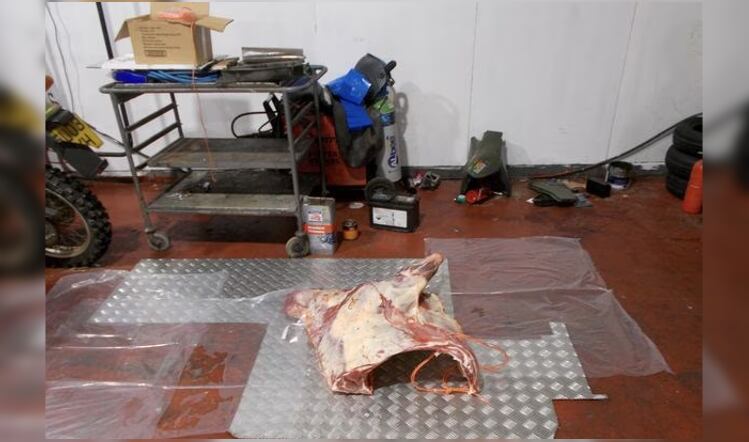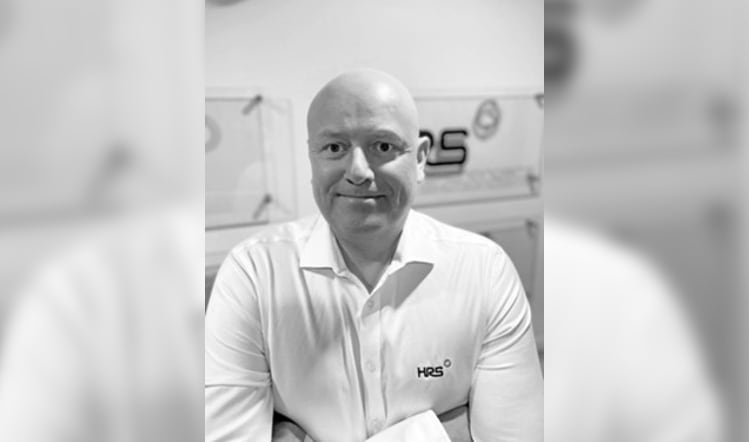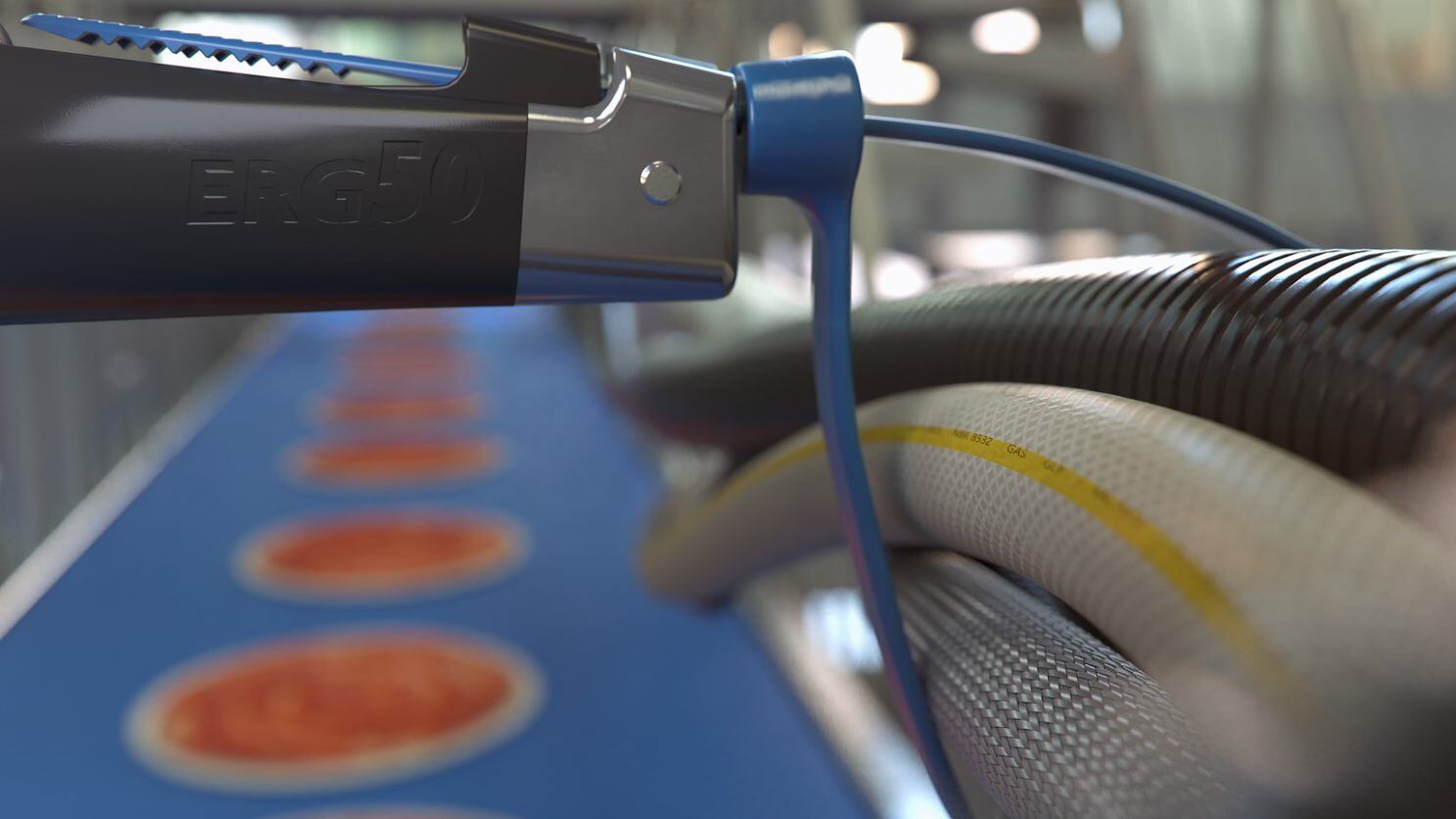With this in mind, Spiroflow re-designed its existing flexible screw conveyor (FSC) agitator with an updated version that can be easily dismantled in place for cleaning. The new design can also be retrofitted to existing machines in place of the current standard agitator unit.
Spiroflow’s standard agitator design has been in use for more than 20 years and previously required tooled intervention to remove it and take it apart – the new version can be easily stripped down and reassembled in situ safely, as and when needed.
“In certain situations, it’s important for our customers to have the ability to quickly strip down the agitator so it can be cleaned by the operator safely and without the use of tools,” explained Spiroflow’s Chris Brennan, technical sales manager.
“With the new agitator design, all access is protected by safety interlocks and the gearbox and motor remain in place. There is no need to have plugs and sockets or heavy lifting to facilitate its removal, so cleaning can be done on the line, thereby saving time in the process. The additional benefit of the new agitator is that it can be retrofitted to existing FSCs.”
Spiroflow’s approach to clean-in-place (CIP) systems may be a novel way to reduce downtime on dry ingredients lines, but what about wet ingredients or systems that operate in humid environments? And what happens when that equipment can no longer take the strain of repeated wash-downs day in, day out? This was a question answered by equipment supplier Loma.
Slippery when wet
This was the position canned baby food producer Cook Inov faced when it started to experience production downtimes related to an ageing Loma checkweigher that was reaching the end of its life – the machine was no longer suited to the requirements of a busy and humid operating environment and was unable to withstand being frequently cleaned with high-pressure washdowns.
Cook Inov approached Loma to replace its failing system with something more fit for purpose that could withstand the demands of its production process, ultimately walking away with the CW3 Run-Wet Checkweigher system.
Designed to withstand harsh, high-pressure, high temperature cleaning regimes, the system requires no drying time following cleaning, enabling immediate start functionality that greatly improves overall equipment effectiveness Along with easier and more effective cleaning, the system’s Automatic Mean Weight Correct safeguards compliance to weight legislation.
Cook Inov maintenance manager Frédéric Bolzinger said: “Our new Run-Wet machine is a real step-change. Not only have we found our production efficiency has increased markedly since the machine’s installation, but it is also easy to use and very reliable.”
Conveying safety issues
Building hygienic design into the food factory has become a major consideration in recent years, with suppliers looking to eliminate risks of contamination before they have the chance to happen.
Open conveyor systems like bucket elevators and belt conveyors can be more vulnerable to contamination and create opportunities for product to spill onto the floor creating waste. Closed conveyors offer a solution, in which products are effectively sealed off from the outside environment.
Tubular drag cable conveyors gently move products that are prone to breaking or crumbling through a sealed tube using a coated, flexible stainless-steel drag cable pulled through on a loop. Solid circular discs (flights) are attached to the cable, which push the product through the tube without using air.
Justin Kerr, founder of food safety consultation firm Factor IV Solutions, elaborated: “An enclosed conveyor like the Cablevey provides a controlled environment that reduces the risk of exposure to contaminants and pathogens from outside the system when properly maintained. Because it is closed, it is less susceptible to aerosols and over spray from adjacent lines.”
Enclosed conveyors can also enable a ‘wet cleaning’ process, whereby the system can be quickly flooded with water and sanitised without disassembly.
The wet cleaning procedure begins with a water rinse followed by foaming agent, a sanitising rinse, and a final water rinse. Once the system is thoroughly flushed out, drying is achieved by attaching urethane wipers to the tubular conveyor’s discs, which act like a “squeegee” to remove any residual water.
Since a complete and thorough cleaning can be accomplished without disassembly of the system, the entire process only takes 20-90 minutes – depending upon the layout, product and desired level of cleanliness.
People safety
In the health and safety space, concerns have been raised surrounding the impact of the UK Government’s Retained EU Law (Revocation and Reform) Bill on health and safety protections.
Should it be passed by government, the bill would see certain retained EU law – holdovers from the UK’s decision to keep parity with the EU post-Brexit – revoked and enable the restatement, replacement or updating of certain retained EU law.
In theory, this move would allow the UK Government to finally break away from the perceived heavy handedness of EU regulation and create a system more fit for purpose. However, there are concerns that great swathes of regulations that serve to uphold food standards and security risk being discarded overnight if they aren’t updated before the bill’s passing.
As Ross Matthewman, head of policy and campaigns at the Chartered Institute of Environmental Health, explained: “There are very real concerns about the impact of the Retained EU Law Bill on our country’s health and safety protections, with the potential for many of the regulations we take for granted simply disappearing overnight.
“Our members are concerned that, without the regulations, businesses would be ‘stumbling around in the dark’ as to how to ensure they are complying with their duties under the Act. There would be more variation in standards and securing improvements in businesses would be more difficult.”
Matthewman also voiced concerns that the uncertainty about how to comply with the act could leave businesses more likely to be prosecuted for failing to protect their staff and the public.
“With regard to enforcement, the regulations help to set a benchmark that supports proportionality and consistency,” he continued. “We recognise the need for planned and thorough reviews of regulations with a proper process of consultation. We do not believe, however, that this Bill provides suitable mechanisms for conducting such reviews.
“The UK has a proud record on health and safety. The removal of EU-derived health and safety regulations would risk increasing accidents, work related injuries and ill health and thereby jeopardise that record.”
Food safety
While it seems food firms’ dedication to protecting the safety of its workers is still high on their list of priorities, there’s still the question of keeping the food made in the factory safe for the end consumer.
With government initiatives such as the Plastic Packaging Tax driving the sector away from single-use plastics in lieu of more sustainable materials, the safety of food comes into question.
Plastic has long been heralded for its ability to keep products safe from contamination once they leave the production line, so what can manufacturers do when one of the most trusted packaging materials is no longer on the table?
Sonia Guri, food safety expert at industrial gas business Air Products, highlighted the use of modified atmosphere packaging (MAP) – in combination with plastic packaging – to limit the growth of harmful microorganisms and extend shelf lives. But as packaging materials evolve, so too must the MAP process.
“As new packaging materials emerge, adapting the carefully selected combination of high purity gases used in modified atmospheres will be key,” said Guri. “When selecting these materials, it is critical the sector considers not just its sustainability but also consumer safety and food waste.
“As a result, we are working with our colleagues across the industry to find and test alternative packaging materials that minimise the impact on the environment. However, the materials still need to ‘hold gas’ and be used in the MAP process, ensuring that food waste does not increase as a result of the reduction in plastic use. There are some promising new materials being developed that will support the continued use of MAP and, in turn, the drive to reduce food waste.”
Ultimately, the future of manufacturing needs to strike a balance between sustainability, safety and consumer appeal, Guri concluded.
“For food safety, the question now is how we can adapt tried and tested technologies such as MAP for use in alternative packaging materials so that food products continue to be safe, as well as sustainable.”
From managing downtime to navigating the pitfalls of safety law, food and drink manufacturers must constantly stay on their toes to not only keep their food safe, but also their employees. But with the raft of innovation and hopes of a system fit for the UK in the future, manufacturers should have the tools to be able to adapt to whatever is thrown at them.





